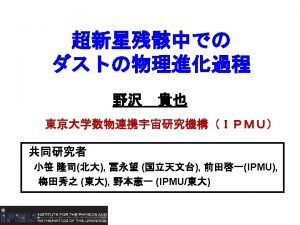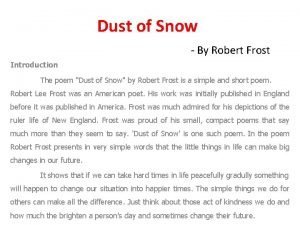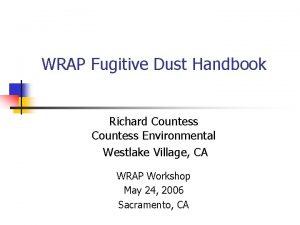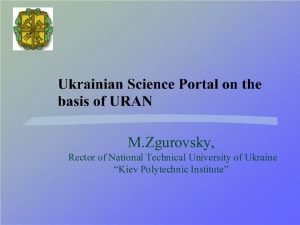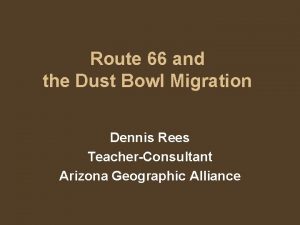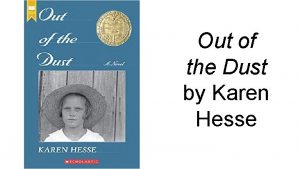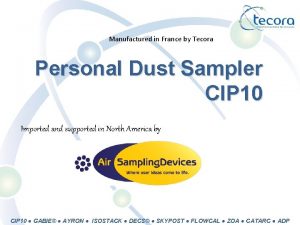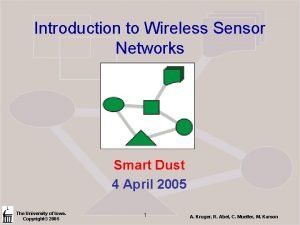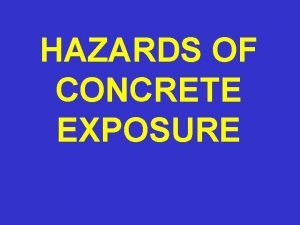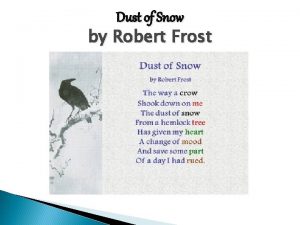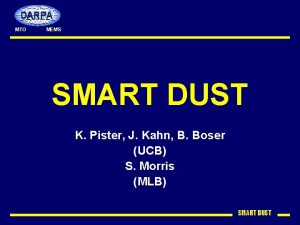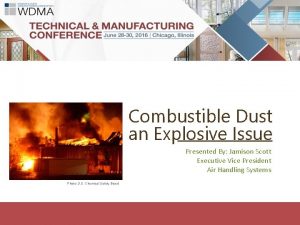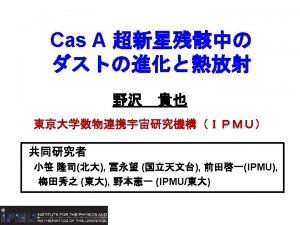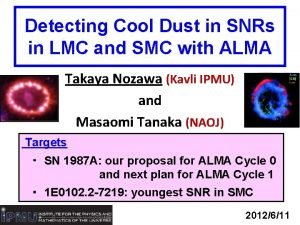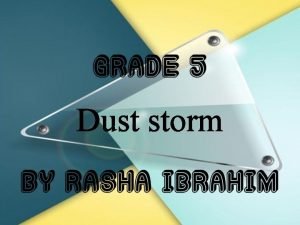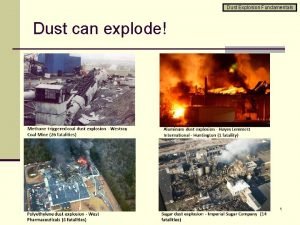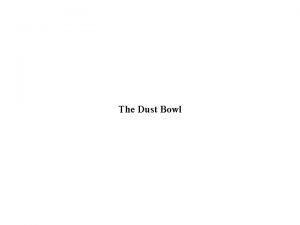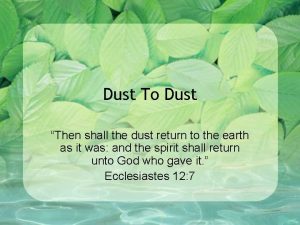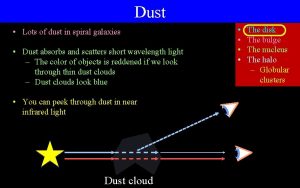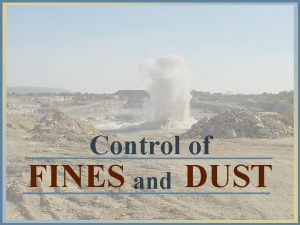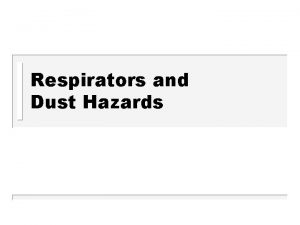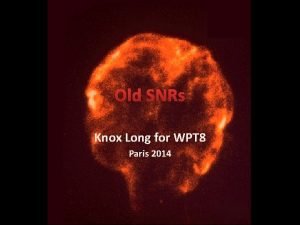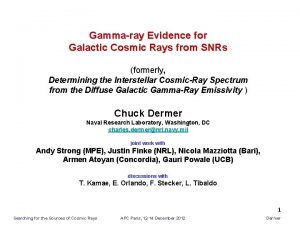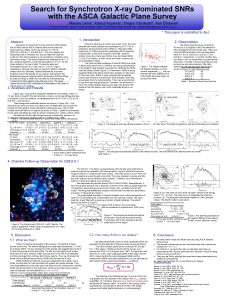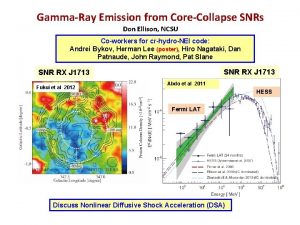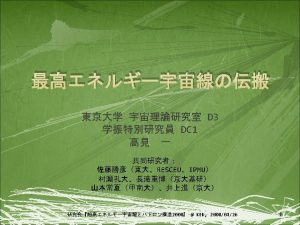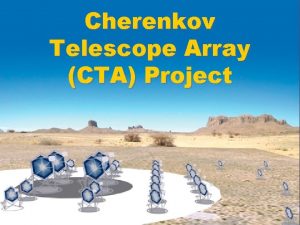1 1 Introduction Dust in SNRs CCSNe are
















- Slides: 16


1 -1. Introduction ○ Dust in SNRs ・ CCSNe are main sources of interstellar dust? - formation of dust in the ejecta of SNe - destruction of dust by the reverse shock ➔ What kind and how much amount of dust are supplied by CCSNe? ・ physical processes of dust in the shocked gas - erosion by sputtering and collisional heating ・ IR thermal emission from shock-heated dust ➔ structure of circumstellar medium and mass-loss history of progenitor star young remnants of CCSNe!

1 -2. Cassiopeia A SNR ○ Cas A SNR - age: ~340 yr (Thorstensen et al. 2001) - distance: d=3. 4 kpc (Reed et al. 1995) - shock radius forward shock : ~150” (~2. 5 pc) reverse shock : ~100” (~1. 7 pc) - oxygen-rich SNR dense O-rich fast-moving knots (O, Ar, S, Si, Fe …) thermal emission from ejecta-dust ➔ Mdust = 0. 02 -0. 054 Msun (Rho et al. 2008) - SN type : Type IIb (Mstar=15 -20 Msun) (Krause et al. 2008)

1 -3. Aim of our study ・ Formation of dust in the ejecta of Type IIb SN ➔ composition, size, and mass of newly formed dust ・ Evolution of dust in the hot plasma in the SNR ➔ dynamics and destruction of dust ➔ What fraction of newly formed dust can survive and is injected into the ISM? ・ Thermal emission from shock-heated dust ➔ comparison with IR observations of Cas A ➔ dependence of thermal emission from dust on the ambient density

1 -4. Composition and mass of dust formed Mass of dust formed average radius ・ various kinds of dust can condense in each layer Because of the low gas density in SN IIb, the radius of newly fomred dust grains is small (< 0. 01μm) ・ Total dust mass : 0. 167 Msun

Dust Evolution in SNRs T = (1 -2) x 104 K n. H, 0 = 0. 1 -1 cm-3 He core FS RS CD

2 -1. Calculation of dust evolution in SNR ○ Model of calculations (Nozawa et al. 2006, 2007) ・ejecta model - hydrodynamic model for dust formation calculation ・ISM - homogeneous, Tgas=104 K - n. H = 1. 0 and 10. 0 cm-3 - solar composition of gas ・treating dust as a test particle - erosion by sputtering - deceleration by gas drag - collsiional heating

2 -2. Dynamics of dust ・ dust model : results of dust formation calculations ・ treating (spherical) dust grains as test particles ・ neglecting the effects of charge of dust

2 -3. Erosion rate of dust by sputtering ・ da / dt ~ 10 -6 n. H μm yr-1 cm 3 at T > 106 K

2 -4. Evolution of dust in Cas A SNR n=1. 0 /cc n=10. 0 /cc

2 -5. Time evolution of dust mass n=1. 0 /cc n=10. 0 /cc Mdust ~ 10 -4 Msun at 105 yr Mdust = 0 Msun at 105 yr Core-collapse SNe with thin H-envelope cannot be the main sources of dust

3 -4. Thermal emission from dust

3 -5. Comparison with Cas A observation (1) Data: Hines et al. (2004) red: with SH green: without SH

3 -6. Comparison with Cas A observation (2) Data: Hines et al. (2004) red: with SH green: without SH

4 -2. Dependence of IR SED on ambient density ρx 1 ρ x 3. 3 Md = 0. 06 Msun ・ dust species ρ x 5 C and Mg 2 Si. O 4 ・ dust size distribution f(a)∝a^-3. 5 amin = 0. 001 μm amax = 0. 5 μm ・ MC : Msil = 3 : 7 ρ x 10 Data: Hines et al. (2004) red: ejecta dust red: with SH blue: CSM dust green: without SH

Summary 1) Small dust grains formed in Type IIb SN cannot survive destruction by the reverse shock 2) IR SED well reflects physical processes of destruction and stochastic heating of dust ➔ properties (size and composition) of dust ➔ density structure of circumstellar medium 3) Model of dust destruction and heating in Type IIb SNR to reproduce the observed SED of Cas A is Md, eje = 0. 06 Msun, Md, ism = 0. 03 -0. 07 Msun d. M/dt = 6. 6 x 10 -5 Msun/yr ➔ ejecta-dust in denser clump?
 Ccsne
Ccsne Antigentest åre
Antigentest åre Dust of snow drawing
Dust of snow drawing Wrap fugitive dust handbook
Wrap fugitive dust handbook War photographer themes
War photographer themes Dust osvita
Dust osvita Route 66 dust bowl
Route 66 dust bowl Tobacco dust appearance
Tobacco dust appearance Out of the dust summary
Out of the dust summary Personal dust sampler
Personal dust sampler Dust bowl slideshow
Dust bowl slideshow Kris pister
Kris pister Depression dust bowl photos
Depression dust bowl photos Concrete dust inhalation
Concrete dust inhalation Dust of snow robert frost meaning
Dust of snow robert frost meaning Smart dust darpa
Smart dust darpa Combustible dust examples
Combustible dust examples
